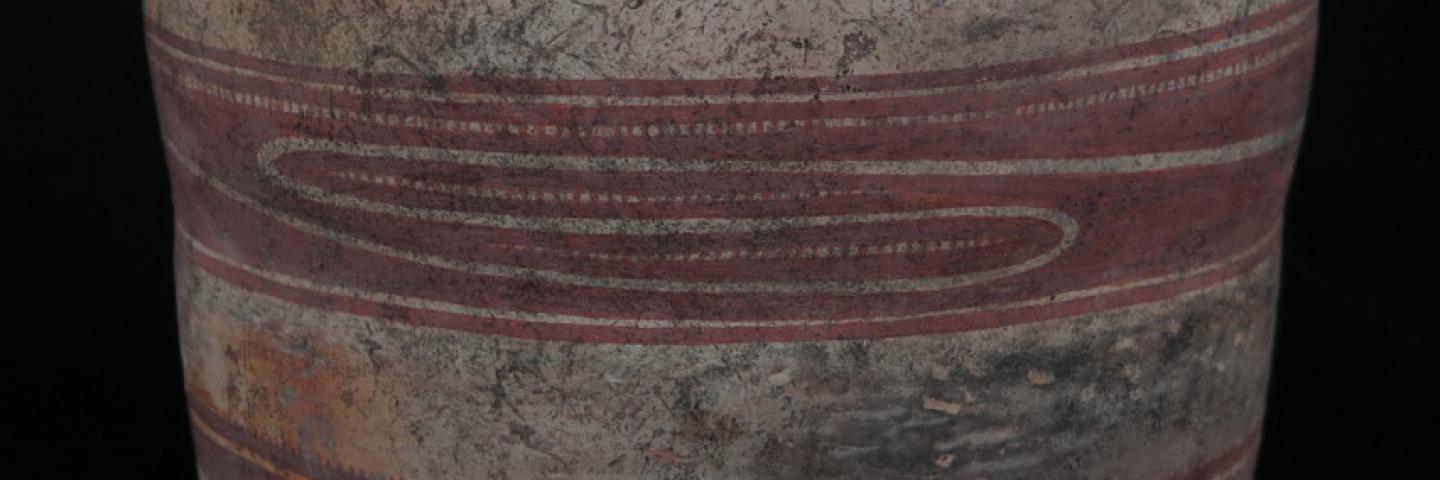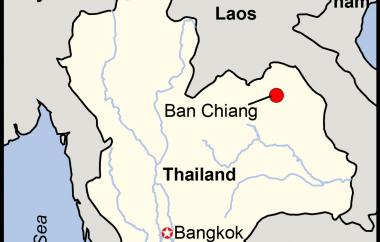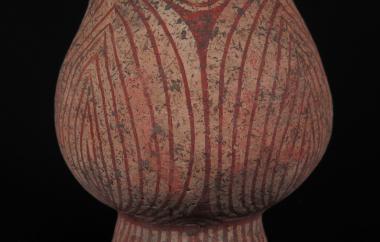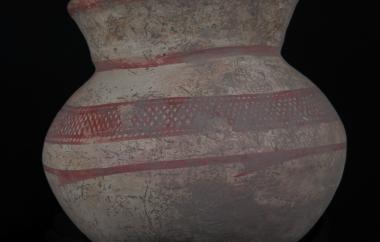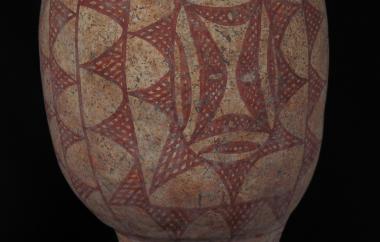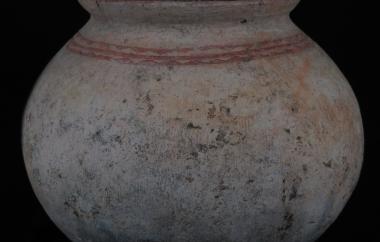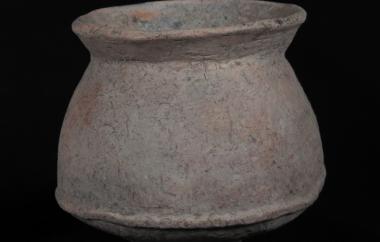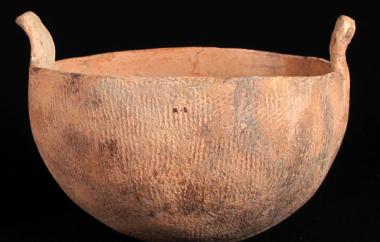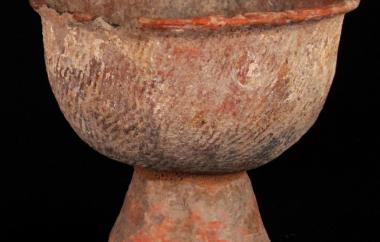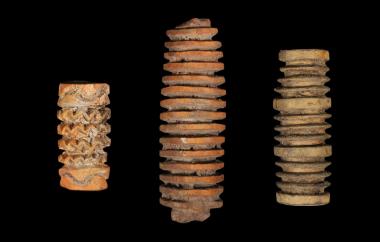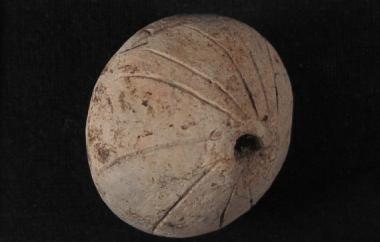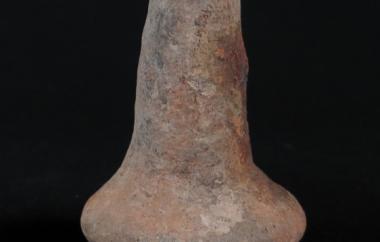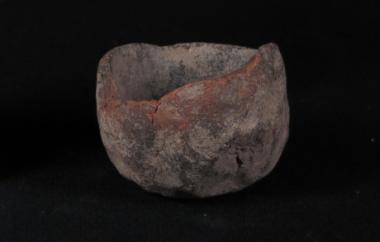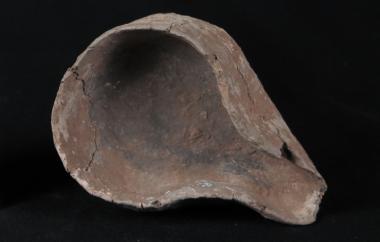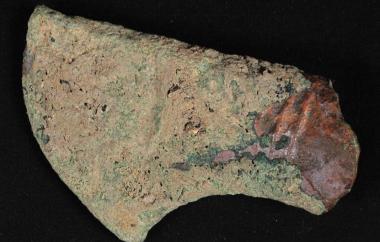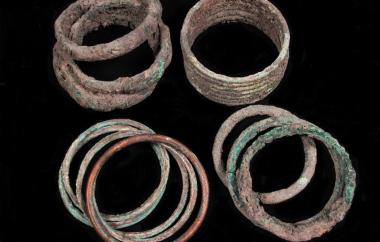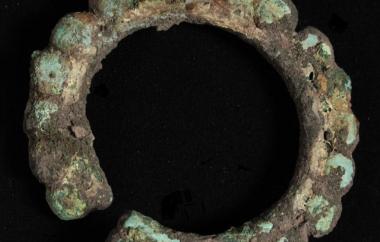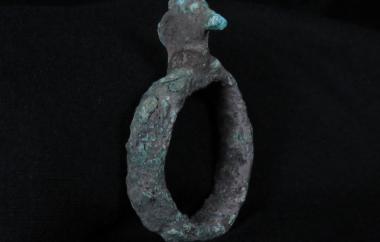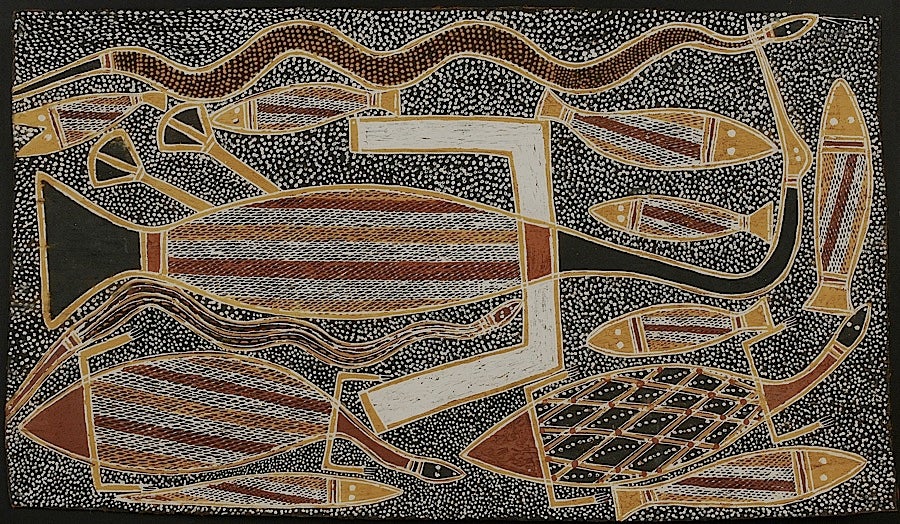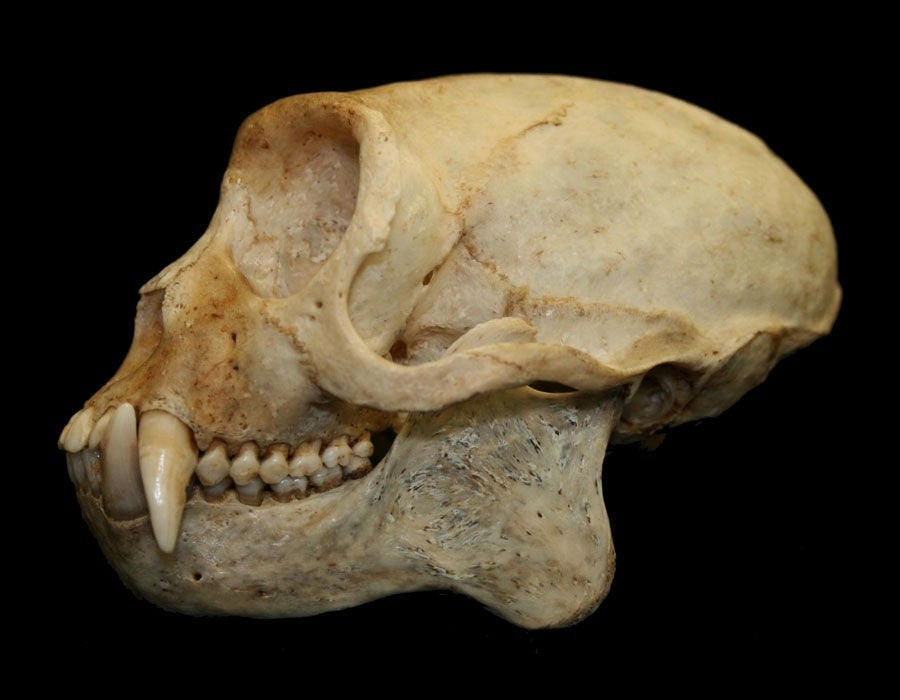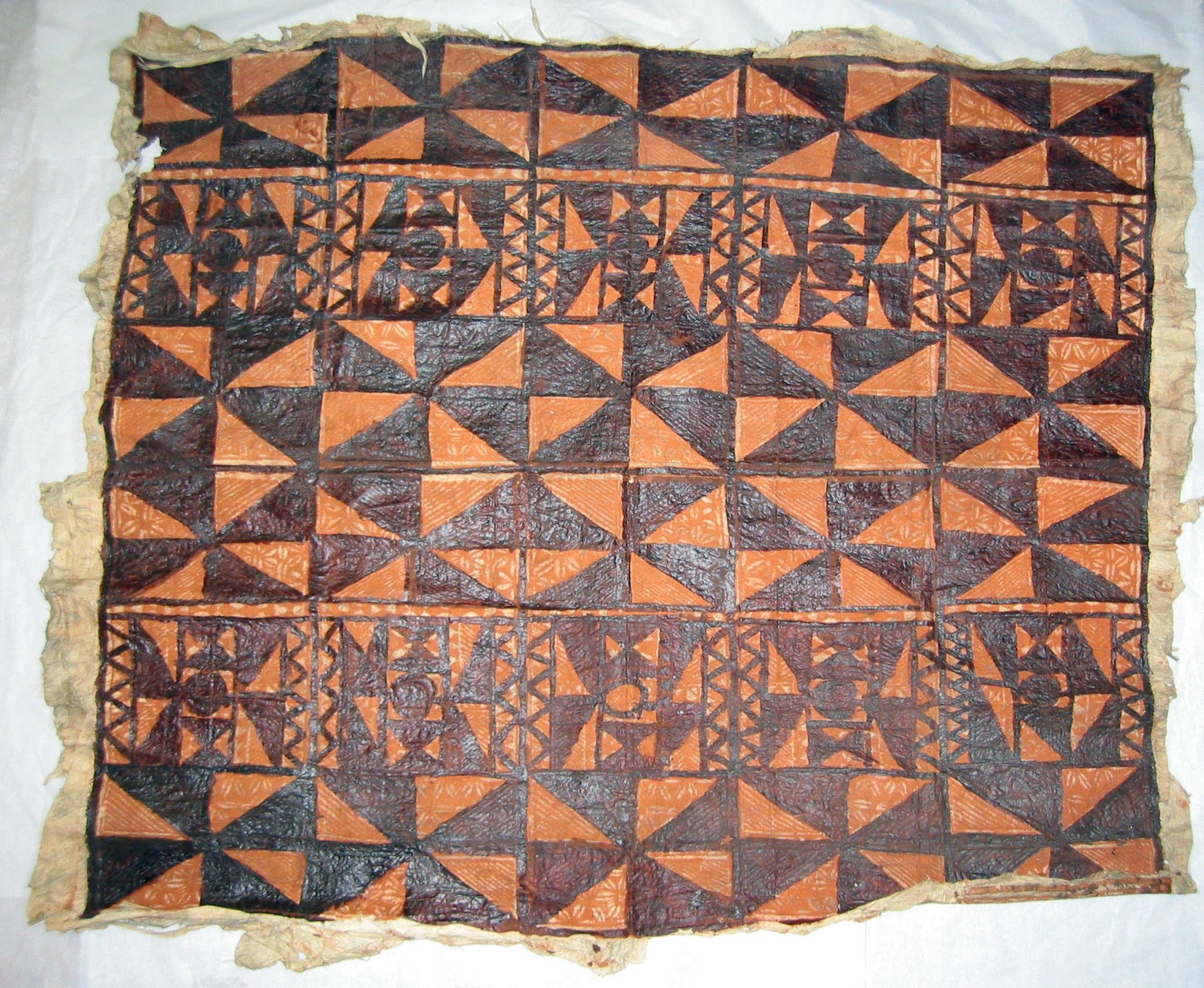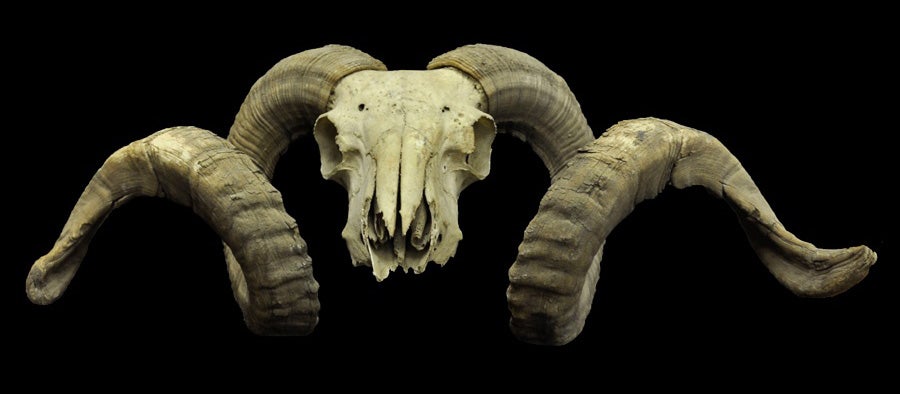Ban Chiang in northeast Thailand is a UNESCO World Heritage site and an important location for understanding the prehistory of Southeast Asia. University of Pennsylvania excavations in the mid-1970s uncovered numerous burials and artifacts indicating that people buried their relatives underneath and around their houses, which were constructed above the ground on piles or posts (White 1982). The site was occupied from the 3rd millennium BCE to the early first millennium CE and has been divided into three periods: the Early Period (2100 – 900 BCE), the Middle Period (900 – 300 BCE), and the Late Period (300 BCE – 200 CE) (White and Hamilton 2018a).
This gallery spotlights examples from the museum’s collection, including ceramics from the Early, Middle, and Late Periods, as well as objects related to craft production and daily life. Some of the most spectacular pieces are the Late Period red-on-buff painted ceramics which contain abstract spiral or geometric designs. There are also several objects of associated bronze or copper-based metallurgy, including a crucible (8-1183), a possible crucible (8-1182), and a sandstone bivalve mold (8-1184). Most bronze objects produced were either agricultural implements and tools or personal ornaments like bangles.
One unusual bronze bracelet in the collection (8-1205) contains a cow or cattle figurine, which is a motif that was common across much of mainland Southeast Asia. Pottery production was also an important craft, and the museum’s collection includes a pottery anvil, which would have been used with a wooden paddle to shape earthenware pots. Textile production is suggested by a spindle whorl and several unusual carved ceramic cylinders called rollers (objects 8-1202, 8-1192, and 8-1203), which may have been used to print designs on textiles.
Unfortunately, Ban Chiang and sites nearby have suffered from heavy looting. Early finds from the site sparked an interest from local and foreign collectors, which encouraged villagers to dig on their property, especially for the famous Late Period painted ceramics. At the same time, villagers began producing fakes for the art market with the same local clays and construction techniques that their ancestors used. Many of these pieces combined old pots with newly fashioned pieces to be sold to collectors (Gorman 1982). Potential fake or composite pieces in this collection include objects 8-915 and 8-917, which seem to combine an older vessel with a newer base or pedestal. Object 8-1151 is an unusual piece with handles that may have been added at a later date.
The Museum of Natural and Cultural History received the pieces in this collection from a private donor who had purchased them from local sources. It is not known if the objects came from the site of Ban Chiang specifically or a nearby site, but they represent examples of the Ban Chiang cultural tradition.
Text by Alison Carter, with thanks to Tse Siang Lim, Carmen Sarjeant, Sonya Sobel, and Joyce White for their advice. Images © UO Museum of Natural and Cultural History.
Further Reading:
Gorman, Chester F.
1982 The Pillaging of Ban Chiang. Early Man 4:28-34. PDF available.
White, Joyce
1982 Ban Chiang: Discovery of a Lost Bronze Age. The University Museum, University of Pennsylvania, Philadelphia.
White, Joyce C., and Elizabeth G. Hamilton (editors)
2018a Ban Chiang, Northeast Thailand, Volume 2A: Background to the Study of the Metal Remains. Philadelphia, PA: University of Pennsylvania Press.
White, Joyce, and Elizabeth Hamilton (editors)
2018b Ban Chiang, Northeast Thailand. Volume 2B: Metals and Related Evidence from Ban Chiang, Bam Tong, Ban Phak Top, and Don Klang. Philadelphia, PA: University of Pennsylvania Press.
White, Joyce, and Elizabeth Hamilton (editors)
2019 Ban Chiang, Northeast Thailand, Volume 2C: The Metal Remains in Regional Context. Philadelphia, PA: University of Pennsylvania Press.
The Ban Chiang Project from the Institute for Southeast Asian Archaeology
Recently published monographs on Ban Chiang from the Institute for Southeast Asian Archaeology
Map of Thailand, and the location of Ban Chiang.
Cat. #8-1136
Late Period red-on-buff cylindrical vessel with horizontal spiral motif.
18 cm high x 17.5 cm diameter
Cat. #8-898
Late Period red-on-buff pedestaled vessel with concentric vertical design sometimes called a tree-ring, ripple, or lens shape.
20 cm high x 18 cm diameter
Cat. #8-921
Late Period red-on-buff globular vessel with round bottom and simple horizontal cross-hatch design.
20 cm high x 22 cm diameter
Cat #8-985
Late Period red-on-buff pedestaled vase; geometric design motif with cross-hatching.
30 cm high x 18 cm diameter
Cat. #8-922
Middle Period globular vessel with red lines and delicate cord markings.
25 cm high x 30 cm diameter
Cat. #8-1208
Pedestaled vessel with short foot and applique typical of Early Period at Ban Chiang.
11.5 cm high x 12 cm diameter
Cat. #8-1151
Possible Early Period bowl
Handles may have been added later.
14 cm high (with handles) x 19 cm diameter
Cat. #8-915
Pedestaled jar, possible fake or composite: clays and paint differ between pedestal and upper vessel and seam is visible between the two.
19.5 cm high x 18 cm diameter
Cat. #8-917
Possible fake or composite pot: cord-marked upper bowl is typical of Early Period vessels while pedestal is Late Period in style.
13 cm high x 14 cm diameter
L to R: Cat. #8-1202, #8-1198, #8-1195
Late Period carved ceramic cylinders ("rollers") from Ban Chiang are frequently found with spindle whorls and may be related to textile manufacturing, perhaps used to print designs on textiles.
Center, 8.5 cm long x 2.5 cm diameter
Cat. #8-1203
Spindle Whorl
Used in textile production, spindle whorls were reported from Ban Chiang's mid and upper layers and frequently found with ceramic rollers.
3 cm high x 3.5 cm diameter
Cat #8-1189
Pottery anvil
Today's Thai potters still use an anvil placed inside a vessel, and a paddle used outside, to shape the walls of an earthenware pot.
10 cm high x 7 cm diameter
Cat. #8-1182
Ceramic crucible, lamp, or mold
Sooty or burned exterior suggest this object served a pyrotechnological function.
3.5 cm high x 4.5 cm diameter
Cat. #8-1183
Spouted ceramic crucible
Would have contained ore or charcoal as part of the metal melting or smelting process.
4 cm high x 11 cm long x 7.5 cm wide
Cat. #8-1184
Sandstone bivalve mold
Used to produce a small bronze implement, probably adze or axe, from molten metal.
Two halves together: 7 cm long x 5.5 cm wide x 5 cm thick
Cat. #8-1197
Copper-based or bronze "dibble stick"
Socket allowed hafting on piece of wood; likely an agricultural implement.
10.5 cm long x 7 cm wide x 2 cm thick
From top left, clockwise: Cat. #8-1191L, #8-1191D, #8-1191B, #8-1191S
Simple copper-based or bronze bangles were frequently found as grave goods.
Upper left, 8 cm diameter x 4 cm thick
Cat. #8-1201
Bangle with scalloped design
Similar to Type K2 bangles at Ban Chiang; may have been worn on wrist or ankle.
7 cm diameter x 1 cm thick
Cat. #8-1205
Bracelet with cow head, likely copper-based metal
Water buffalo or cattle motifs were widespread across mainland Southeast Asia and suggest the prehistoric importance of this symbol.
6 cm diameter, including the head
